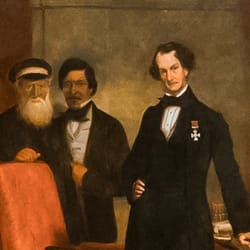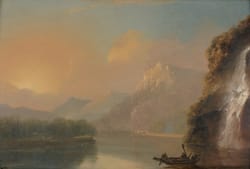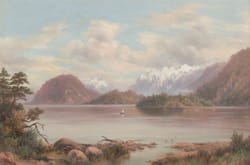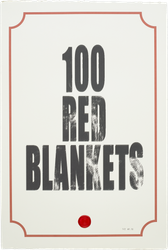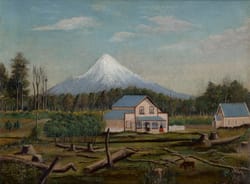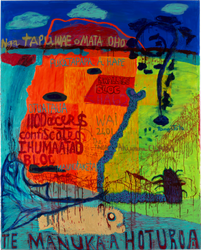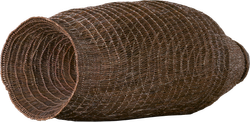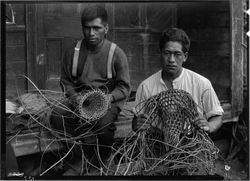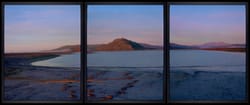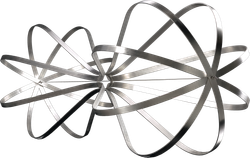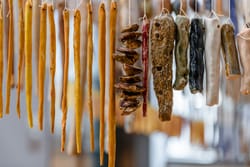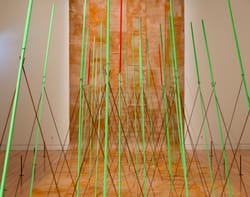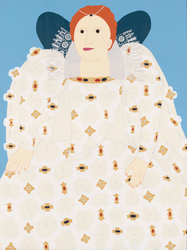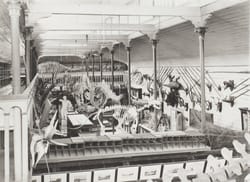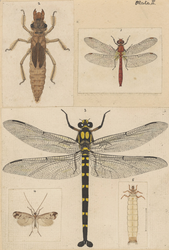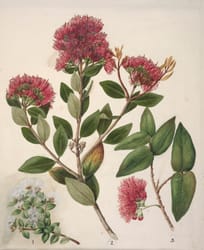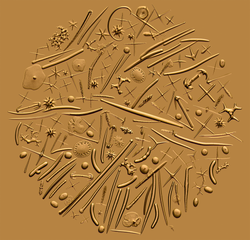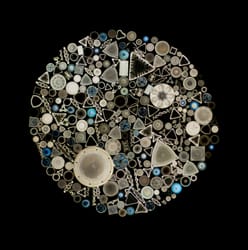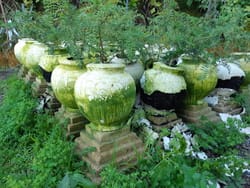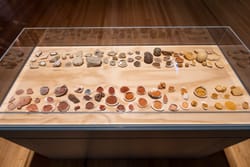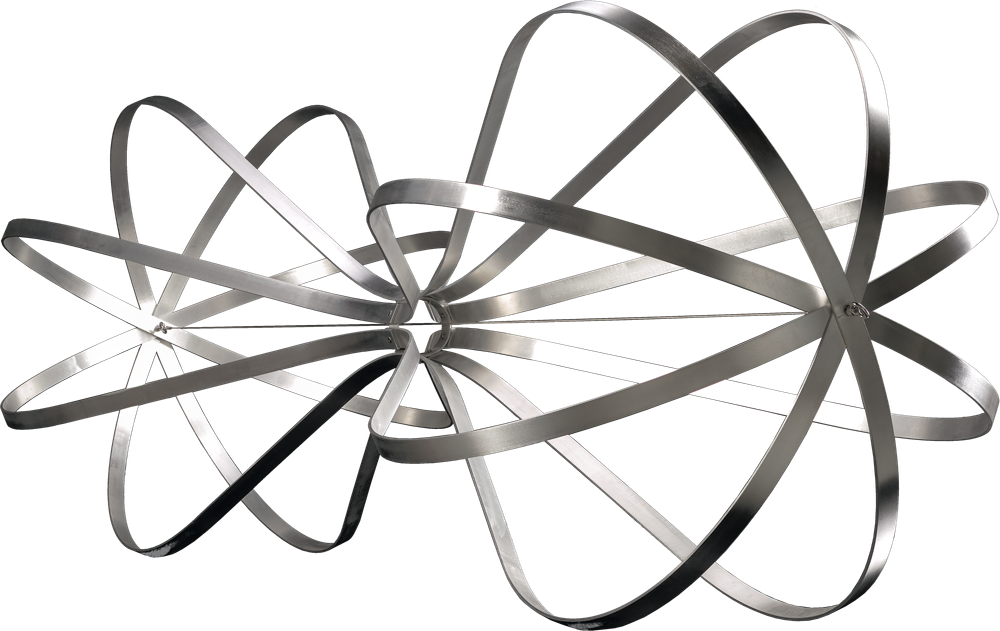
Close
MOANA
Here’s curator Megan Tamati-Quennell.
MEGAN
Matt Pine was a very senior Māori artist, who only recently passed away. He was brought up in Whanganui, and has an iwi [tribal] connection to Whanganui and the river.
He has a real connection to that river through his lived experience and tribally.
MOANA
This first piece, made of metal strips, is from his Trap series. Matt Pine is imagining the form of a hīnaki [eel trap] in minimalistic, modern terms.
As an artist, Matt Pine was interested in open forms and closed forms. A hīnaki is an open form: it’s organic, water flows through it. It works in harmony with the river. But his other artwork here, from the High Water series, is a closed form.
This sculpture resembles the top of a bell tower that stands next to the Whanganui River. It looks like it’s been submerged, with only the top still visible.
With this work, Pine is imagining what would happen if the river burst its banks. The bell tower is fixed and unmoving – as opposed to the hīnaki, which is a form that works with the river.
MEGAN
There is an environmental comment he’s making about our differing relationships with those waterways.
Like Natalie in her photographs, he’s looking at our relationship and our impacts on the life and wellbeing of that river.
MOANA
Tēnā koe Megan mō to whakamārama mai. [Thank you, Megan, for your explanations]
Otirā, tēnā koutou, kua whakarongo mai – thank you for coming along with me as we explored some of these connections between the artworks and taonga. And there’s much more to uncover.
I think I’ll take some time now to listen to the soundscape for this gallery. It’s composed by musician Mara TK, inspired by James McDonald’s photographs and the hīnaki themselves. I encourage you to take off your headphones for a while and do the same.
Ka kite anō! [See you again!]
